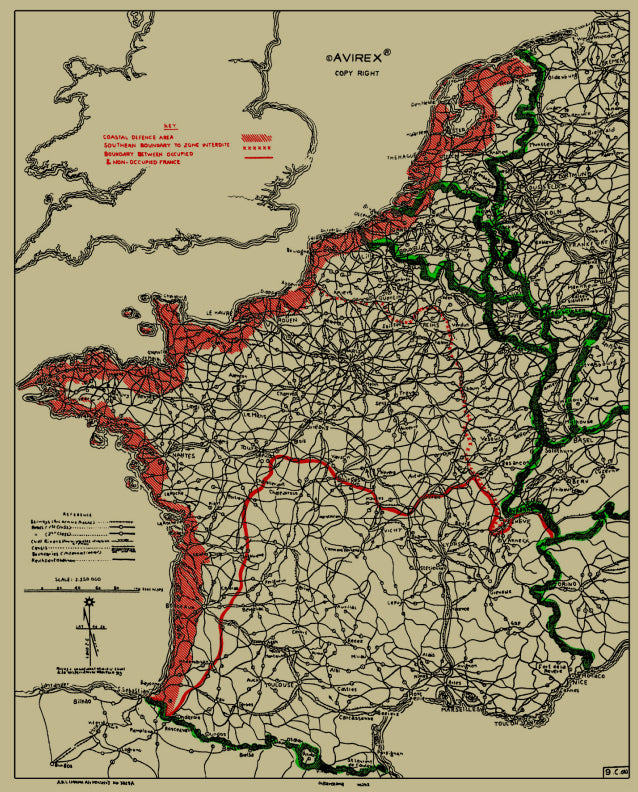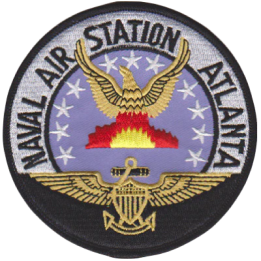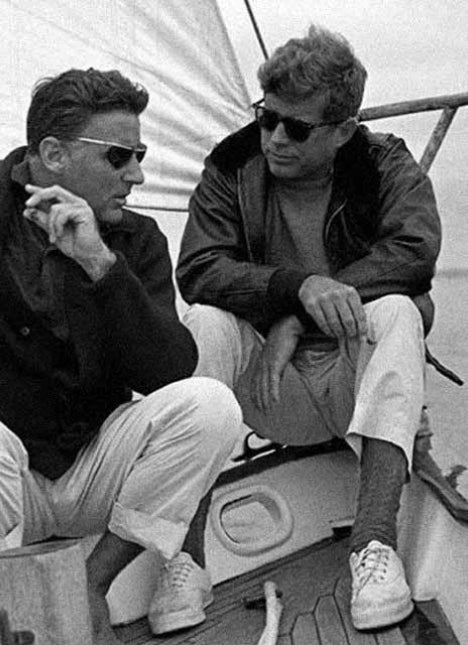Dettagli del prodotto
- Collezione: Autunno/Inverno
- Design classico della tradizione della Marina americana
- Dispone di 2 toppe
- Realizzato in pelle di capra marrone scuro
- Colletto in montone e cerniera frontale in nichel
- Due tasche applicate con patta chiusa da bottone
- Cintura e polsini in lana
- Tassello sotto il braccio per una maggiore libertà di movimento
- Fodera in raso di rayon per il massimo comfort.
- Il modello è alto 186 cm e indossa una taglia M.
Materiali
Spedizione e resi
History of G1 PaTCH LEATHER JACKET

Nessuno sa esattamente quando è stato standardizzato; il suo predecessore, tuttavia, era molto probabilmente la giacca tipo 440. A differenza della G1, la 440 non aveva il caratteristico colletto di montone. Durante la seconda guerra mondiale, la Marina degli Stati Uniti nel Pacifico si rifiutò di consentire ai piloti di decorare le loro giacche G1. Ai tropici, ragionarono, i piloti non avrebbero avuto bisogno di indossare le loro giacche fuori dalla cabina di pilotaggio. Dopo la guerra, la Marina limitò le decorazioni dipinte sulle giacche e consentì solo toppe ufficiali. Ironicamente, questo decreto determinò un drammatico aumento del numero di toppe sulle giacche dei piloti. Oggi, la Marina consente solo una toppa per giacca.
La giacca G1 fu introdotta alla fine degli anni '30 e rimase in uso continuo fino al 1978. Nel 1981, grazie agli sforzi del Segretario della Marina John Lehman, la G1 fu ripristinata e resa nuovamente disponibile entro il 1983. Realizzata in pelle di capra marrone molto scura, la giacca ha un collo di montone, una cerniera nichelata sul davanti e due tasche applicate con patta chiusa da bottoni, con una tasca per penna nella tasca sinistra. Cintura e polsini sono in 100% lana (cintura bidirezionale). La parte posteriore è bi-swing placcata, con tassello sotto le ascelle, cuciture laterali. L'interno è in raso di rayon.


La giacca G1 fu introdotta alla fine degli anni '30 e rimase in uso continuo fino al 1978. Nel 1981, grazie agli sforzi del Segretario della Marina John Lehman, la G1 fu ripristinata e resa nuovamente disponibile entro il 1983. Realizzata in pelle di capra marrone molto scura, la giacca ha un collo di montone, una cerniera nichelata sul davanti e due tasche applicate con patta chiusa da bottoni, con una tasca per penna nella tasca sinistra. Cintura e polsini sono in 100% lana (cintura bidirezionale). La parte posteriore è bi-swing placcata, con tassello sotto le ascelle, cuciture laterali. L'interno è in raso di rayon.
Nessuno sa esattamente quando è stato standardizzato; il suo predecessore, tuttavia, era molto probabilmente la giacca tipo 440. A differenza della G1, la 440 non aveva il caratteristico colletto di montone. Durante la seconda guerra mondiale, la Marina degli Stati Uniti nel Pacifico si rifiutò di consentire ai piloti di decorare le loro giacche G1. Ai tropici, ragionarono, i piloti non avrebbero avuto bisogno di indossare le loro giacche fuori dalla cabina di pilotaggio. Dopo la guerra, la Marina limitò le decorazioni dipinte sulle giacche e consentì solo toppe ufficiali. Ironicamente, questo decreto determinò un drammatico aumento del numero di toppe sulle giacche dei piloti. Oggi, la Marina consente solo una toppa per giacca.




























